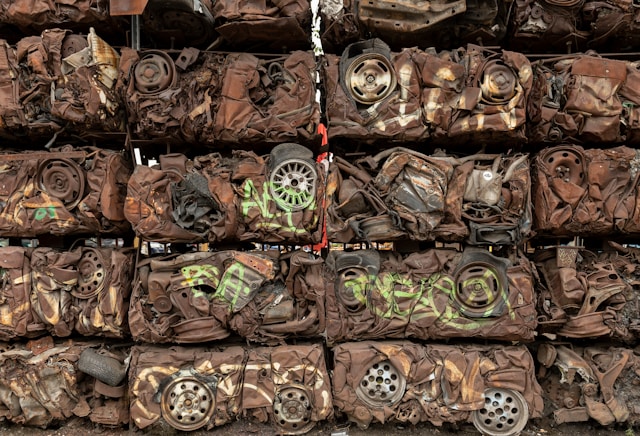Table of Contents
- Introduction to Scrap Metal Recycling
- Environmental Benefits
- Economic Advantages
- Commonly Recycled Metals
- The Process of Scrap Metal Recycling
- Tips for Recycling Metal at Home
- Innovations in Metal Recycling
Introduction to Scrap Metal Recycling
Scrap metal recycling has become increasingly popular as awareness of environmental sustainability grows. It involves collecting, processing, and repurposing metals that would otherwise end up in landfills. By recycling scrap metal, such as scrap cars Morris County NJ, we contribute to a healthier planet and more efficient use of natural resources.
Many people are unaware of the significant benefits that recycling offers, from reducing waste to conserving energy. Recycling plays a critical role in addressing the growing demand for metals without depleting natural resources. Recycling scrap metal has clear environmental benefits, but it also promotes environmental awareness and an awareness of how human activity affects the environment.
Environmental Benefits
One of the primary advantages of recycling scrap metal is its positive impact on the environment. Recent research indicates that recycling metals can save natural resources and cut greenhouse gas emissions dramatically. Recycling aluminum, for example, can save up to 95% of the energy needed to make new aluminum from raw resources. This energy-saving aspect is essential because the mining and processing of raw materials are energy-intensive activities that deplete finite resources and contribute to environmental degradation.
Additionally, recycling helps reduce the amount of waste that ends up in landfills. Metals like steel and copper are non-biodegradable, so recycling them means they won’t take up space and contribute to pollution for centuries. Recycling also lessens the need for new mining operations, which can have devastating effects on ecosystems by causing deforestation, soil erosion, and water contamination. By choosing to recycle, we curb these harmful practices and support a more sustainable way of living.
Economic Advantages
Beyond the environmental benefits, scrap metal recycling also offers significant economic advantages. The recycling sector boosts employment and the overall economy. The Institute of Scrap Recycling Industries (ISRI) estimates that recycling activities generate billions of dollars in economic activity annually in the United States alone. This industry creates jobs in a variety of sectors by supporting a wide range of jobs, from manufacturing and sales to collection and processing.
Furthermore, recycling metals can be a profitable endeavor for individuals. Many recycling centers offer money in exchange for scrap metal, providing an incentive for people to recycle and generating additional income in communities. This financial incentive encourages participation and makes recycling a viable option for both individuals and businesses looking to manage waste sustainably. The revenue generated from recycled metals also tends to stay within local economies, supporting further growth and development.
Commonly Recycled Metals
Metals commonly recycled include aluminum, copper, steel, iron, and brass. Each type of metal has its unique recycling process, but all can be effectively repurposed without losing their properties. For instance, recycled aluminum is often used to produce new cans, foils, and automotive parts. Recycled steel can be reused in construction projects, whereas copper is valuable for electrical wiring and plumbing materials.
The versatility of these metals makes recycling an efficient way to manage metal resources. By understanding the different uses of recycled metals, industries can ensure they are making the most out of their recycling efforts. This not only minimizes waste but also promotes a circular economy where materials are continuously used, recycled, and reused rather than being disposed of after a single use.
The Process of Scrap Metal Recycling
The recycling process generally involves several steps:
- Collection: Gathering scrap metal from various sources such as households, businesses, or industrial sites. This initial step is crucial as it sets the foundation for the recycling process. Effective collection methods ensure that a large volume of scrap metal is available for recycling.
- Sorting: Separating metals based on their type and quality to ensure efficient recycling. This step involves using advanced technologies like magnetic separators and sensor-based sorting to accurately classify metals.
- Processing: Shredding or melting metals to break them down into smaller, more manageable pieces. Shredding is often used for ferrous metals like steel, while non-ferrous metals like aluminum and copper are usually melted.
- Purification: Removing impurities to produce high-quality recycled metal. Techniques like electrolysis and chemical purification are used to ensure the recycled metal meets industry standards and specifications.
- Manufacturing: Repurposing purified metals into new products or materials for various industries. This final step closes the recycling loop as the recycled metal is used to manufacture items such as automotive parts, building materials, and consumer goods.
Tips for Recycling Metal at Home
Recycling metal at home can be simple and beneficial. Here are some tips to get started:
- Identify recyclable metals: Look for items like aluminum cans, old appliances, or copper wiring. Familiarize yourself with common household items that contain recyclable metals to ensure nothing is overlooked.
- Separate metals: Sort different types of metals into separate containers to streamline the recycling process. Keeping metals sorted by type and material enhances the efficiency and effectiveness of the recycling center you use.
- Visit local recycling centers: Many communities have centers that accept scrap metal and may even offer compensation. Research the facilities in your area to find out which metals they accept and what payment options they have.
- Avoid contamination: Clean metal items before recycling to ensure they are free from contaminants. Removing any non-metal parts, such as plastic covers or rubber seals, helps maintain the quality of the recycled metal.
For further guidance, you can check out detailed resources from the Recycle Now website. Utilizing these tips can make home recycling a seamless and rewarding experience, encouraging more people to incorporate metal recycling into their daily routines.
Innovations in Metal Recycling
Technology is continuously advancing, leading to innovative methods in metal recycling. For example, new sorting technologies use artificial intelligence (AI) and machine learning to improve the efficiency and accuracy of separating different metals. These advanced systems can recognize and sort a variety of metals with precision, significantly reducing the margin for error.
Additionally, advancements in smelting techniques have made it possible to recycle metals with lower energy consumption. Modern smelting processes are not only more efficient but also produce fewer emissions, making them a more environmentally friendly option. Innovations in this area are critical as they help to make metal recycling more sustainable and accessible.
Organizations are also exploring ways to recycle rare metals from electronic waste, a growing concern in our tech-driven world. These innovations not only make metal recycling more efficient but also broaden its scope to include materials previously considered non-recyclable. Extracting valuable metals from electronic waste helps to address the issue of e-waste and conserve rare and precious resources.



